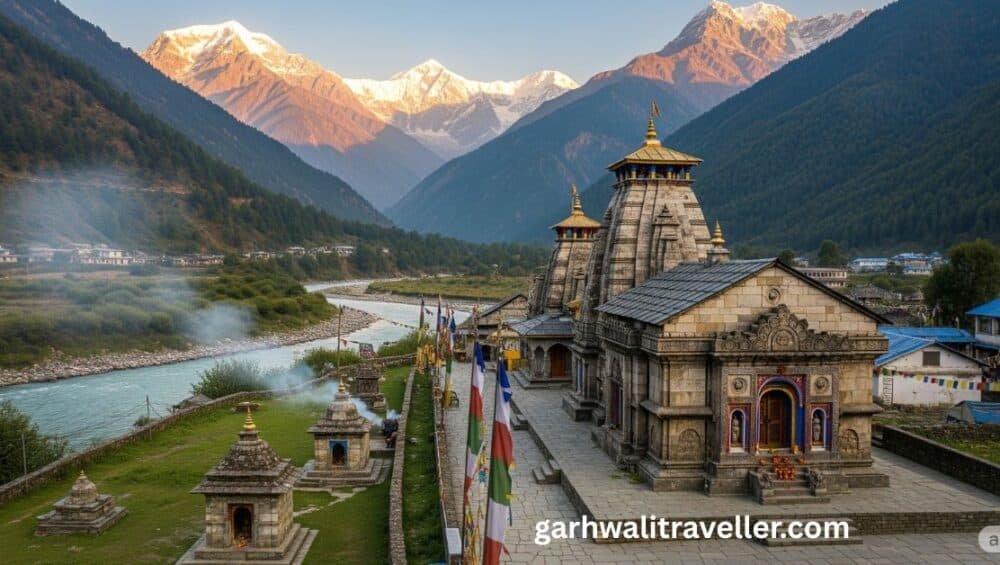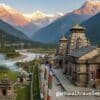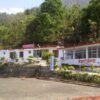Unveiling Chamoli’s Most Revered Temples & Sacred Sites
Tucked amidst Uttarakhand’s snow-clad peaks and emerald valleys, Chamoli district is not just a paradise for trekkers—it’s the beating spiritual heart of the Garhwal Himalayas. From ancient temples perched atop rugged ridges to serene ashrams echoing with peace, Chamoli’s sacred sites weave a soulful tale of faith, adventure, and tradition. Let’s explore these gems with the fresh perspective of a local, blending in practical travel tips, drone-worthy vistas, and stories that go far beyond standard lists.
Why Chamoli’s Religious Sites Are Special
Chamoli stands apart for its blend of awe-inspiring nature and profound spirituality. Every village and riverbank whispers ancient stories—from the footfalls of sages to the chants of present-day pilgrims. Visiting these spots isn’t just about rituals; it’s about experiencing divinity in the wild lap of the Himalayas.
Must-Visit Sacred Sites in Chamoli
1. Badrinath Temple
Location: Badrinath Town
Why Visit: The crown jewel of Uttarakhand’s Char Dham, this 8th-century shrine is devoted to Lord Vishnu. The gushing Alaknanda, flanked by snowy Neelkanth, makes every morning here magical.
What to Expect:
- Sudden hush at dawn amid temple bells
- Soothing, sulphur-rich hot springs nearby
- Pilgrims and trekkers from across the globe
Pro Tip: Visit in late May/September for thinner crowds and clear skies.
2. Hemkund Sahib
Location: At 4,633m, near Valley of Flowers
Why Visit: A high-altitude pilgrimage for Sikhs, where Guru Gobind Singh meditated. Surrounded by glacier-fed lake and seven mountains—nothing short of otherworldly.
What to Expect:
- Steep trek (start from Govindghat; easy pace needed)
- Langar (hot meals) by the lake—divine after the climb
- Rhododendron forests and rare wildflowers on way up
Pro Tip: Carry warm layers; even in June, it’s freezing.
3. Tungnath Temple
Location: Chopta
Why Visit: Said to be the world’s highest Shiva temple, an easy trek makes it accessible for families and first-timers.
What to Expect:
- Surreal stone temple set against green meadows
- Panoramic drone shots (weather permitting)
- Golden sunrise from Chandrashila peak above
Pro Tip: Visit at sunrise or sunset for Himalayan alpenglow.
4. Joshimath
Highlights:
- Shankaracharya Math: Ancient seat of Adi Shankaracharya
- Narasimha Temple: Beloved for legends tied to Badrinath
Pro Tip: Joshimath is also the gateway for cable car rides to Auli ski slopes.
5. Gopeshwar
Highlights:
- Gopinath Temple: Hemmed by lush valleys; known for its unique trident
- Chandika Devi Temple: Overlooks the Alaknanda, perfect at dusk
Pro Tip: Less crowded, ideal for quiet meditation and local culture.
Offbeat Sacred Spots
- Kalpeshwar: Last of the Panch Kedar, hidden in Urgam valley, perfect for seekers and photographers.
- Rudranath: Trekking here rewards you with meadows and centuries-old rituals amid the mist.
- Tapovan: Meadows near Joshimath, famous for ashrams and healing hot springs.
What Makes These Sites Unique for Travelers?
- Local Devotion: Witness village fairs, folk performances, and simple hospitality.
- Drone-Ready Scenery: Capture rivers, temples, and forests from unique aerial angles (be sure to follow local drone regulations).
- Adventure + Spirituality: Pair your visit with treks, camping, or river walks.
Practical Tips for Pilgrims & Travelers
- Best Time: May–June & September–October (after monsoon, before snow blocks routes).
- Getting Around: Local shared jeeps, rented scooters, and trails for short walks.
- Stay Local: Homestays and dharamshalas let you experience Uttarakhandi hospitality.
- Participate: Try aarti at dawn, join local festivals, eat at pilgrim kitchens (langar/bhandara).
6. Nanda Devi Temple (Nandprayag, Nauti Village)
Location: Nauti village, near Karnaprayag and Nandprayag
Why Visit: This centuries-old temple is dedicated to Goddess Nanda Devi—Chamoli’s most venerated deity. It’s the spiritual focal point for the grand Nanda Devi Raj Jat Yatra, a once-in-12-years pilgrimage that draws devotees from all Uttarakhand.
What to Expect:
- Ornate architecture and Himalayan myths
- Lively celebrations during the annual fair, with traditional music and dance
- Stunning views of terraced fields, with the Alaknanda river in the valley below
Pro Tip: If you can, witness the Nanda Raj Jat procession—it’s a spectacle of faith, color, and ancient rituals.
7. Bhavishya Badri
Location: 17km from Joshimath, in Subain village
Why Visit: Known as the “future Badrinath,” legends say when Badrinath becomes inaccessible, Bhavishya Badri will take its place as the home of Lord Vishnu. Hidden in a forested glen, it’s one of the Panch Badri temples.
What to Expect:
- A serene atmosphere, surrounded by dense deodar forests
- Small yet revered shrine, with mystical vibes and fewer crowds
- Short uphill trek through rhododendron blooms in spring
Pro Tip: Combine your visit with stops at Tapovan’s meadows for a meditative Himalayan day.
8. Kalpeshwar Mahadev
Location: Urgam Valley, near Helang on the Badrinath route
Why Visit: The only Panch Kedar temple accessible year-round, Kalpeshwar is where Lord Shiva is worshipped as “Jataadhar” (locks of hair). Its cave-shrine setting invokes ancient Himalayan sages and hermits.
What to Expect:
- Verdant terraced fields and forest scenery
- Quiet, almost mystical aura—ideal for soul-searchers
- Interactions with warm, welcoming villagers
Pro Tip: Stay a night in Urgam Valley homestays for authentic local flavors and sunrise temple views.
9. Gwaldam Buddhist Gompa
Location: Gwaldam, between Garhwal and Kumaon
Why Visit: While Chamoli is steeped in Hindu and Sikh traditions, Gwaldam’s tranquil Tibetan Buddhist gompa offers a contrasting peace. It’s a center for prayer, festivals, and Buddhist philosophy.
What to Expect:
- Colorful prayer flags fluttering against mountain backdrops
- Monks chanting and sometimes local festivals
- Panoramic vistas—perfect for mindful meditation
Pro Tip: Early morning or evening is best for a contemplative visit with fewer visitors.
10. Adi Badri
Location: 17km from Karnaprayag, on the way to Ranikhet
Why Visit: A cluster of 16 ancient shrines, believed to date as far back as the Gupta period. Historically, it’s said to be established by Adi Shankaracharya himself as part of the Panch Badri pilgrimage.
What to Expect:
- Archaeological intrigue—see carved stone idols, intricate pillars, and stepped temple structures
- Serene countryside ideal for wandering and photography
- Off-the-tourist-trail peace—great for history lovers
Pro Tip: Pair your trip with a visit to the riverside confluence at Karnaprayag for a complete devotional day.
Final Thoughts
Chamoli’s temples and sacred sites aren’t just stops on a pilgrim trail—they’re windows into the soul of Uttarakhand and living proof of how faith and nature intertwine. Whether you’re a spiritual seeker, trekker, or an explorer with a camera, Chamoli’s sacred places promise inspiration and serenity in equal measure.
Pack your bags, keep your heart open, and let your Chamoli story begin!
By adding these lesser-known yet powerful religious sites, your Chamoli journey transforms into a spiritual odyssey weaving grand temples, secluded shrines, and vibrant local traditions—all set in the mighty Himalayas. Whether you walk with pilgrims, join village festivals, or simply breathe in the purity of these ancient sites, each visit becomes an unforgettable chapter in your own Uttarakhand story.






